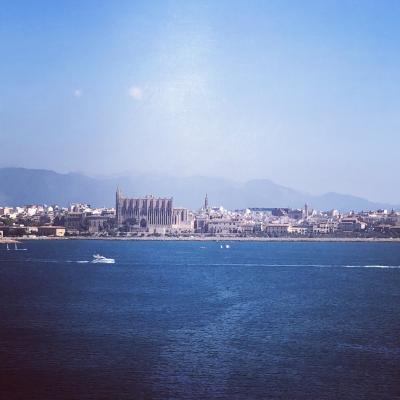What cultural or historical sites are worth visiting in Palma upon arrival from Sóller?
Similar Topics
palma cathedral
la seu cathedral
antoni gaudí architecture
almudaina palace
arab baths palma
es baluard museum
palma old town
passeig des born
Upon arriving in Palma from Sóller, visitors are greeted with a wealth of cultural and historical treasures that reflect the city’s rich Mediterranean heritage. One of the most iconic landmarks is the magnificent Palma Cathedral, known locally as La Seu. This Gothic masterpiece, perched dramatically on the waterfront, offers breathtaking views both inside and out. Its soaring vaulted ceilings, intricate stained glass windows, and the influence of the renowned architect Antoni Gaudí, who worked on the cathedral in the early 20th century, make it a compelling site for those interested in religious art and architecture.
A stroll through Palma’s old town reveals a labyrinth of narrow streets lined with historic buildings that speak of centuries past. The Almudaina Palace, originally an Islamic fortress before becoming a royal residence, stands as a testament to the diverse cultural influences that shaped the island. Nearby, the Arab Baths provide a serene glimpse into Palma’s Moorish past, with their atmospheric stone chambers and tranquil gardens. These sites not only offer insight into Palma’s layered history but also showcase the harmonious blend of cultures that have enriched the city over time.
Art lovers will find enjoyment in visiting the Es Baluard Museum of Modern and Contemporary Art, which is housed in a historic fortress overlooking the harbor. This museum offers a fascinating contrast between Palma's old military architecture and cutting-edge artistic expressions, highlighting the city's ongoing cultural evolution. Moreover, exploring the Passeig des Born, a grand tree-lined boulevard, reveals elegant cafés and shops nestled in buildings that echo the grandeur of a bygone era, inviting visitors to immerse themselves in Palma’s vibrant urban life alongside its historical heritage. Together, these cultural and historical sites provide a profound and multifaceted introduction to Palma for travelers stepping off the train from Sóller.
A stroll through Palma’s old town reveals a labyrinth of narrow streets lined with historic buildings that speak of centuries past. The Almudaina Palace, originally an Islamic fortress before becoming a royal residence, stands as a testament to the diverse cultural influences that shaped the island. Nearby, the Arab Baths provide a serene glimpse into Palma’s Moorish past, with their atmospheric stone chambers and tranquil gardens. These sites not only offer insight into Palma’s layered history but also showcase the harmonious blend of cultures that have enriched the city over time.
Art lovers will find enjoyment in visiting the Es Baluard Museum of Modern and Contemporary Art, which is housed in a historic fortress overlooking the harbor. This museum offers a fascinating contrast between Palma's old military architecture and cutting-edge artistic expressions, highlighting the city's ongoing cultural evolution. Moreover, exploring the Passeig des Born, a grand tree-lined boulevard, reveals elegant cafés and shops nestled in buildings that echo the grandeur of a bygone era, inviting visitors to immerse themselves in Palma’s vibrant urban life alongside its historical heritage. Together, these cultural and historical sites provide a profound and multifaceted introduction to Palma for travelers stepping off the train from Sóller.
🧩 Related Questions
Related Question
How can visitors participate in eco-tours that focus on Mallorca’s plant life and ecosystems?
Related Question
What impact does nodding wood sorrel have on the yield of crops commonly grown in Mallorca?
Related Question
What other regional attractions or activities can be combined with a visit to Mallorca’s wineries?

